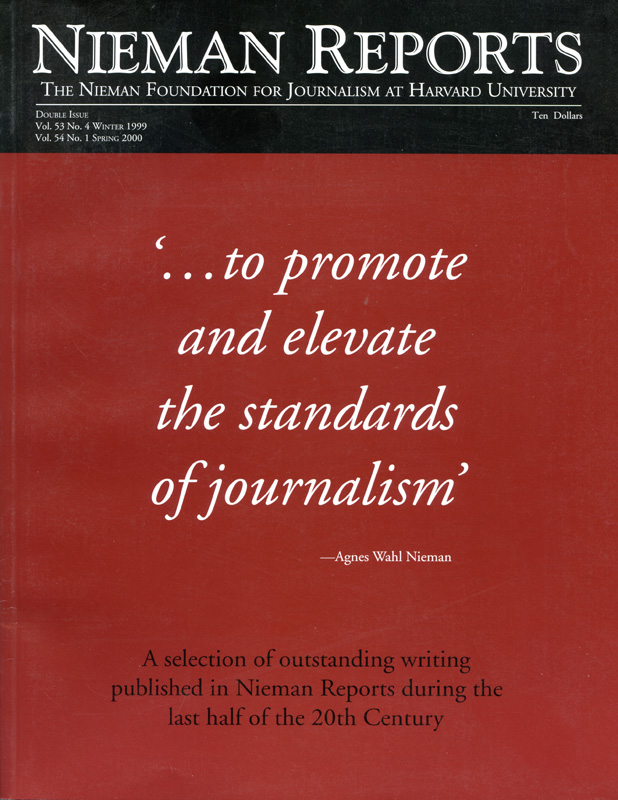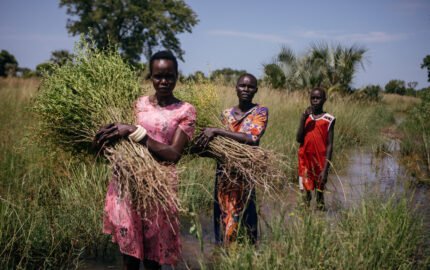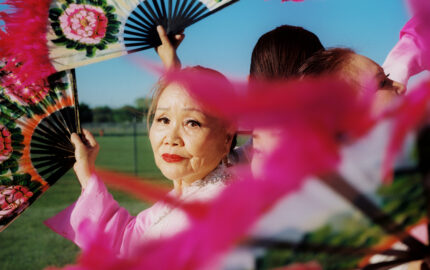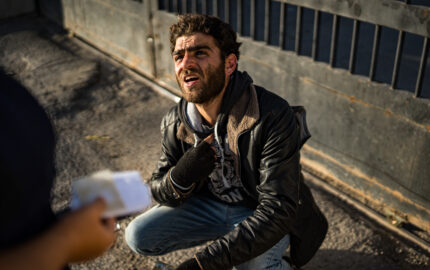
The proper dissemination of news by a free press is not accomplished solely by the printed word. There is a visual record, too, that must be transmitted to do the complete job. The object of this complete job, of course, is the informed public on which our democracy stands.
Our American public gets as much of its news through pictures as it does through the printed word, that is, when it is permitted to see photographs of newsworthy happenings.
Freedom of the press implies exemption from censorship and the right of all persons to publish what seems to be in the public interest, providing, of course, they do not violate the various laws of libel, treason and sedition. And yet, insofar as pictures in the news are concerned, we have anything but a free press.
Admittedly, this is a biased report—biased in favor of complete freedom of information so that the public may not only read about events, but also see for themselves—biased because the writer has lived through 32 years of news photography and has seen attempts at censorship of news pictures by individuals in every walk of life.
The censorship of photographic news starts with our courts and the American Bar Association and goes right down to U.S. Marshals and the Department of Justice, firemen, policemen, private citizens, industry, labor union members, etc. These and many more act the role of self-appointed censors at the source of the news in trying to determine what news the public shall or shall not get.
There is hardly an organized group, whether it concerns industry or labor, professional or amateur, that doesn’t think of pictures and the press photographer when trying to promote campaigns in which their own interests are involved. Yet scarcely a week goes by without physical attacks on press photographers peacefully engaged in covering their news assignments in the public interest.
As a social instrument which serves the public so well in providing visual information, it is subjected to more abuse and restrictions than any other legitimate field of endeavor known to this writer.
Press photography is hampered in the courts because of the archaic thinking of some of the most powerful leaders in legal circles, individuals whose thinking is still in the horse and buggy era. The American Bar Association and the entire legal profession, which is supposed to protect the interests of the people, has adopted a canon of judicial ethics which states arbitrarily that the taking of pictures is “calculated to detract from the essential dignity of the proceedings, degrade the court, and create misconceptions with respect thereto in the mind of the public and should not be permitted.”
Many judges and lawmakers disagree with this fallacious line of reasoning, not based on facts. They feel that news photography in the courtrooms would bring to the American public more accurate reports of the tribunals, but few of these dare to oppose the old die-hards by publicly favoring press photography.
Originally there was good reason for banning pictures in courtrooms. Large bulky cameras, flash powder which went off like a miniature atom bomb, tripods, etc. etc. made this prohibition necessary.
As Max Ehrlich, a prominent New York attorney, in discussing this problem pointed out to the Brooklyn Bar Association, “When the reason for a law perishes, the law itself perishes.”
Today, because of technological advancements in photography, pictures can be taken in any courtroom in the land by means of the existing light only and with cameras so small as to be relatively as inconspicuous as are the reporters taking notes.
“When the reason for a law perishes, the law itself perishes.”
Mr. Ehrlich was quoting the famed Mr. Justice Benjamin N. Cardozo in “The Nature of the Judicial Process,” who said, “I think that when a rule, after it has been duly tested by experience, has been found to be inconsistent with the sense of justice or with the social welfare, there should be less hesitation in frank avowal and full abandonment.” Yet it is those who guide this same legal profession today who refuse to see the logic of this forthright thinking.
Back in 1928 the writer had the good fortune to make a picture, unknown to the subjects therein, which showed the chief defense attorney in a sensational murder trial lunching with the forelady of the jury at the courthouse sandwich bar. As a result, the judge excused the juror from service in the particular trial. That picture was a great service to both the court and the taxpayers. Had the relationship between the chief defense attorney and the forelady been discovered after the trial was finished or after it was well underway, it could easily have necessitated a retrial. This would have meant many additional thousands of dollars expense to the taxpayers.
Although news photography had performed a great service to the court and it had been convincingly demonstrated that pictures could be taken in existing light, without distraction to the subjects or their even being aware of the camera’s presence, the judge refused to permit coverage of the trial by press photographers.…
Press photographers are the victims of physical attacks almost daily, but what do you think of a fire department which turns its hoses away from a burning building in order to douse the photographers who are taking pictures of the fire and of the efforts to extinguish it? Impossible you say? Well according to the Lexington (KY) Herald, this actually happened and quite recently, too. On orders of Fire Chief Frank Dillon, members of the Fayette County, Kentucky, Fire Department, turned their hoses away from a burning structure and directed them onto Lexington Herald photographers covering the fire.
Attacks of one kind or another are growing in number. They are inflicted by self-appointed censors at the source in every part of the country. This has been going on almost unchallenged for years and lately has shown a great increase. Most of these attacks result because every Tom, Dick and Harry seems to think that he can push around news cameramen engaged in doing their legitimate task and get away with it. Unfortunately, in many cases, that is exactly what happens.
…scarcely a week goes by without physical attacks on press photographers peacefully engaged in covering their news assignments in the public interest.
Let me cite some of the recent cases that have been brought to the attention of the National Press Photographers Association [NPPA]:
A story in the Tulsa (OK) Tribune told how Royce Craig, staff photographer, was slugged in the face by Police Lieutenant Arthur Graves, while Graves held Craig defenseless by shoving his service revolver in Craig’s stomach. The assault took place in a federal building corridor after the photographer had taken a picture of Lieutenant Graves outside the courtroom.…
In Borger, Texas, a deputy sheriff confiscated the camera of a staff photographer of the Borger News-Herald, who was taking pictures of the crash of an obsolete Navy Bearcat fighter on a public highway. The deputy sheriff said he did it on “orders” of a Navy commander who was executive officer at a nearby Navy base. The Navy commander explained that he wanted to avoid “bad publicity” for the Navy. As a result of a protest from the NPPA, the Navy policy on the photographing and publicizing of Navy activities was made clear by Admiral R. F. Hickey, the Navy’s Public Information Chief at Washington. In a letter to the NPPA, Admiral Hickey said: “The Navy’s policy with regard to photography and other public information coverage of any event, accidents included, is to cooperate to the fullest extent. This is true when the incident occurs inside a naval establishment. In the Borger incident…there was no reason at all why full coverage was not appropriate, and it appears to me that one of our field personnel did not appreciate what would or would not start ‘bad Navy publicity.’ I have found that giving honest facts is the best procedure.”
The Navy recognizes the public’s right to see and be informed, but that recognition and apology did not fill the blank 3-column rectangle, which the Borger News-Herald ran on its front page in lieu of the suppressed photograph.…
One of the most unpardonable attacks on a photographer took place at the recent Republican National Convention. Stanley Tretick, United Press photographer, nursed a bruised ear as a result of the slugging he received when he tried to take a picture of a delegate who had fainted. Photographer Tretick was covering the floor of the convention, and he was wearing the credentials issued by the Convention Committee, which authorized him to take pictures of goings on during the sessions. Photographs of the slugging were published in papers across the country.
Surely not even politicians can expect to stage a national “circus,” issue credentials to the legitimate members of the press, and then permit delegates to attack photographers performing their assigned duties. Despite the fact that the published photographs very clearly showed one individual with fist raised as he was striking the photographer, while another individual had his arms locked around him, no effort has been made by the Republican National Committee to have these two would-be “censors” reprimanded for their attack on Tretick, nor has the press association taken any legal action against the culprit to protect its own photographer.…
Every single attack on a working newspaperman, who is conscientiously and properly covering the story to which he is assigned, is in effect censorship at the source and is an attack on freedom of the press, as well as the civil rights of the photographer or reporter.
Several editors have already recognized this fact and publicly expressed their views in their editorial columns. It would be helpful if more editors took vigorous action in their news columns and in the courts when circumstances indicate such procedure to be proper.
The Pawtucket Times said editorially after an attack on its photographer, “Civil rights supposedly guaranteed to every American went out the window when a Times’ photographer was assaulted recently. Looking at it as a suppression of the freedom of the press—which it was—might mean missing the really personal side of the unprovoked attack.” The editorial closed with these words: “The work of these men, in keeping the public alert to what is going on, should not be made any harder. They don’t ask special treatment. They ought to be able to expect common courtesy and assurance against lawless assault.”
In contrast to this, the Atlanta Constitution, whose photographer was attacked and his camera smashed, did not even reply to a letter when it was urged by the National Press Photographers Association to prosecute to the limit of the law “both for the protection of their own personnel who were attacked in the line of duty, and in the public interest.”
Generally speaking, the press appears largely to overlook the cumulative effect of these many personal attacks on its photographers and reporters, as they go about their assigned tasks. Although these attacks are spontaneous and completely unorganized, they constitute a continuing threat to freedom of the press.…
As social instruments, news pictures have been responsible for the speeding up of many social reforms which we enjoy today. Whether they be new rules for mine safety, safety on the high seas or on the highways, they were hastened into being by dramatic photographs of bad conditions that were responsible for the disasters.
Slum clearance projects have been hastened by pictures informing the public about the actual condition. Every social effort of modern civilization is helped by the judicious use of news photographs which reveal to the public the conditions that need correcting.
The terror of war has never been brought to the attention of the people with greater impact than was the case in World War II and in the current Korean conflict because of pictures.
Whether it is the bedlam of a political convention; the daily street scene; the glamour, pathos and tragedy of everyday life, or the horror of that worst of all killers, the traffic accident on America’s highways, press photography brings it to us in a manner which everyone—the literate and illiterate—can readily understand.
Joseph Costa, of King Features Syndicate, is Chairman of the Board of the National Press Photographers Association. In his 32 years of photographic journalism he has seen too many cameras smashed and too many arbitrary instances of preventing the picture record to which the public is entitled.


